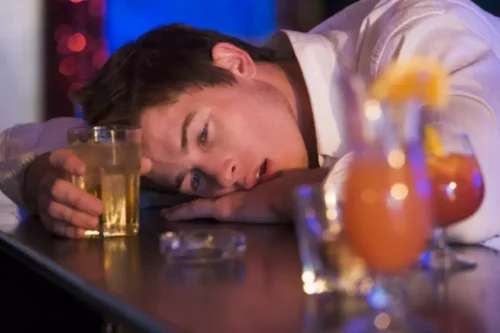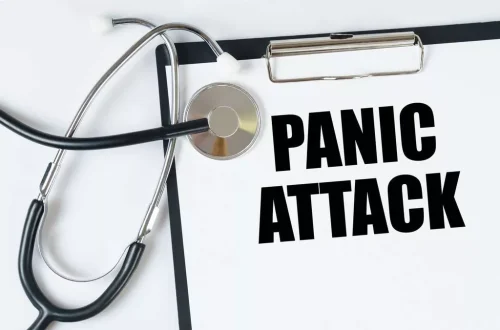
One of the biggest was that he now feels like a “calm person” and the shift improved his quality of life and also helped him work on hard things. David B. Yaden, PhD, is the Roland R. Griffiths Professor of Psychedelic Research at Johns Hopkins University School of Medicine. His research interests include characterizing the acute subjective effects of psychedelics, investigating their capacity to impact well-being and worldview, as well as investigating their benefits and risks.
Similar Posts
Such work is important to understand possible drug–drug interactions and to ensure the safety of participants with OUD who are often maintained on these medications. Further, at our own Imperial College London centre, we are initiating an open-label study into the neuromechanistic and clinical effects of psilocybin in the treatment of detoxified OUD individuals, the first of its kind in this specific group. In recent years, the conversation around psychedelics has shifted from one of taboo to a growing recognition of their potential in mental health treatment and recovery. Among the emerging support networks, the Psychedelics in Recovery group stands out as a unique intersection of various healing lineages, each contributing to a holistic approach to recovery that honors both individual and collective healing.
- Ibogaine treatment outcomes for opioid dependence from a twelve-month follow-up observational study.
- Similarly, Dimitri maintains that newcomers are welcome to the group, but he also recommends people in early recovery defer to a sponsor when it comes to using psychedelics.
- The core of AA’s success lies in its 12-step program, which provides a structured path to sobriety, emphasizing self-reflection, accountability, and spiritual growth.
- In this section, we will describe some of these emerging findings and explore the future direction of this research.
Modern-era clinical trials
She said ibogaine can affect the heart’s rhythm — so continuous cardiac supervision is important during treatment. “By the end of this year, or early 2025, we will have provided our 1,000th veteran with a full subsidy to seek treatment,” Capone said. “So I am here on a mission, a personal mission, to try to do some self recovery,” Reeves said. Acosta was able to access the drug at a clinic in Mexico where it’s unregulated. Psychedelics Today is the planetary leader in psychedelic media, storytelling, and education. MS, SS, CA, and LR provided proofing and comments on overall the structure.
- Increases in brain perfusion were seen in the left putamen, and right insula, as well as temporal, occipital, and cerebellar regions, compared to the patient’s baseline scan.
- Participants often report visual hallucinations and flashbacks of major prior life events with effects lasting up to 3 days (29).
- FMRI studies have observed dysregulated neural responses to video and photo cues in individuals with addiction when compared with matched healthy control subjects.
- Interestingly, psilocybin has been found to decrease connectivity from the amygdala to the primary visual cortex during threat processing (101) and reduce connectivity between the amygdala and the striatum during angry face discrimination (102).
- Most psychedelics are still classified as Schedule I drugs in the United States, making research and clinical use complicated.
- OpenAI cofounder shared some personal anecdotes in a recent appearance on the podcast “Life in Seven Songs,” saying that doing psychedelics was one of the most transformative experiences of his life.
What Are Psychedelic Drugs?
These serotonin-based dynamics are directly relevant to treatment of addiction because of depressed serotonin levels found in addict populations, as well as the role of serotonin as a neuromodulators affecting many other neurotransmitter systems. FMRI techniques have been developed to probe the neural responses to cognitive and psychological tasks, external stimuli, and pharmacological or behavioral challenges. FMRI measures brain activity via the blood oxygenation level-dependent (BOLD) signal, providing an indirect measure of brain activity that can be examined in response to neurocognitive tasks or at rest. In the context of addiction, several well-validated fMRI paradigms have been developed that assess the neural responses to reward, punishment, salience attribution, emotions, memory, cognitive and executive function and their association with clinical outcomes and relapse vulnerability. In particular, our group have previously successfully developed an fMRI platform that assessed novel candidate drugs on the aforementioned key relapse pathways known to be dysfunctional in individuals with addiction using task-based fMRI (80).
- For their first order of business, they created an advisory board of four clinicians and five people who are already involved in psychedelic recovery support groups, including Negrin and Franciotti.
- Soon enough, he found himself interacting with more and more people who were sober and active in 12-step programs, but who also regularly took psychedelics to engage with their spirituality.
- Psychedelic integration coaches guide participants through what they call an “ibogaine experience.”
Looking beyond the opioid receptor: A desperate need for new treatments for opioid use disorder
Dimitri has even found himself suspect of the newfound embrace of psychedelics in the west. Studies on the efficacy of Ibogaine boast a recovery rate for opioid addicts as high as 40 percent, but Dimitri says that this is much higher than his anecdotal evidence has shown. He also predicts that once psychedelic treatments are integrated into the western medical system, efficacy is bound to decline. It takes aftercare of a kind that’s not nearly so sexy to American clinicians. The evolution of trauma-aware clinical practices outside of our fellowship has been another crucial element of are psychedelics addictive. Modern psychology has increasingly recognized the role of trauma in addiction and mental health issues.

- But people can become “addicted” to all sorts of things, including food, sex, sugar, exercise, shopping, stealing, gambling, the list is endless.
- These methods have helped countless individuals, but they’re not without their limitations.
- PIR provides a safe space in which we can openly discuss the role of psychedelics in our individual recovery journeys.
- We need more research, larger studies, and careful consideration of the risks and benefits.
- Psychedelics in Recovery is a forum to share experience and seek/provide support.
PIR holds online meetings twice a month, to allow new and established members separated in physical space to meet. Our membership is open only to those who identify as being in recovery from addiction. The format of PIR meetings resembles that of many other TSFs, typically centered around a rotating topic or open discussion. The meeting will open with a moment of silence, the group together recites the serenity prayer, then the chairperson reads our preamble (adapted from AA), and a working document of our group’s guiding principles. The main portion of the meeting then consists of individual sharing for everyone who wants to and ends after a prompt for anyone who feels their recovery may be in jeopardy and needs to share.

There has been one retrospective survey to date on the use of 5-MeO-DMT in treating individuals with alcohol and other drug use disorders. Of the 1010 participants surveyed with alcohol and drug addiction, 66% of the alcohol and 60% of the drug addiction group reported an improvement in their condition (41). In terms of psychedelics in particular, psilocybin, the psychoactive and psychedelic compound in “magic mushrooms,” can be used to treat depression and reset the functionality of brain circuits that cause a role in depression. Also, microdosing psychedelics can improve cognitive function and flexibility, the same study found.


It began as a single weekly group with anywhere from three to six people, held in office buildings and living rooms in New York City. Soon, a second group formed in San Diego, but spreading the word proved difficult and by 2019 in-person meetings dwindled. In March of 2020, their meetings, like 12-step meetings worldwide, came to an abrupt halt due to Covid-19. “There’s been a proliferation of ketamine therapy clinics in North America; however, we’re lacking the research needed to form standards of training and practice for therapists. Our study provides a starting point for that work.” The research, published recently in PLOS ONE, found that experiential learning could bridge training gaps and enhance therapeutic outcomes in this emerging form of psychedelic-assisted therapy.







